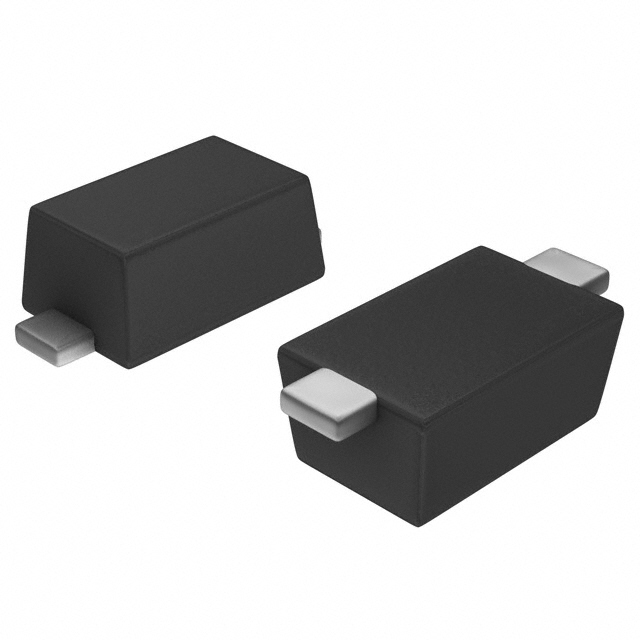RS1GFA Product Overview
Introduction
RS1GFA is a semiconductor device belonging to the category of rectifier diodes. This product is widely used in electronic circuits for its unique characteristics and reliable performance. In this entry, we will provide an overview of RS1GFA, including its basic information, specifications, pin configuration, functional features, advantages and disadvantages, working principles, application field plans, and alternative models.
Basic Information Overview
- Category: Rectifier Diode
- Use: RS1GFA is commonly used in electronic circuits to convert alternating current (AC) to direct current (DC).
- Characteristics: It has low forward voltage drop, high surge current capability, and fast switching speed.
- Package: The diode is typically housed in a small, cylindrical package with two leads.
- Essence: RS1GFA is essential for converting AC power to DC power in various electronic applications.
- Packaging/Quantity: It is available in reels or bulk packaging, with varying quantities depending on the manufacturer.
Specifications
- Maximum Average Forward Current: 1A
- Peak Repetitive Reverse Voltage: 50V
- Forward Voltage Drop: 0.7V
- Reverse Recovery Time: 50ns
- Operating Temperature Range: -55°C to +150°C
Detailed Pin Configuration
The RS1GFA rectifier diode has two pins: the anode and the cathode. The anode is connected to the positive terminal of the circuit, while the cathode is connected to the negative terminal.
Functional Features
- Low Forward Voltage Drop: Ensures minimal power loss during operation.
- High Surge Current Capability: Can withstand short-term high currents without damage.
- Fast Switching Speed: Enables rapid conversion from AC to DC.
Advantages and Disadvantages
Advantages
- Efficient power conversion
- Compact size
- Reliable performance
Disadvantages
- Limited reverse voltage tolerance
- Sensitive to temperature variations
Working Principles
When a positive voltage is applied to the anode with respect to the cathode, the diode allows current to flow, effectively converting AC to DC. Conversely, when the voltage polarity is reversed, the diode blocks the current flow.
Detailed Application Field Plans
RS1GFA is widely used in the following applications: - Power supplies - Battery chargers - LED lighting - Motor drives - Solar inverters
Detailed and Complete Alternative Models
Some alternative models to RS1GFA include: - 1N4001 - 1N4148 - FR107 - UF4007
In conclusion, RS1GFA rectifier diode is a crucial component in electronic circuits, offering efficient power conversion and reliable performance across various applications.
Word count: 398
Lista 10 Vanliga frågor och svar relaterade till tillämpningen av RS1GFA i tekniska lösningar
Sure, here are 10 common questions and answers related to the application of RS1GFA in technical solutions:
What is RS1GFA?
- RS1GFA stands for "Remote Sensing 1st Generation Fire Algorithm," which is a system used to detect and monitor wildfires using satellite imagery and data.
How does RS1GFA work?
- RS1GFA works by analyzing satellite data to detect thermal anomalies and changes in vegetation cover, which can indicate the presence of wildfires. It uses algorithms to process this data and identify potential fire hotspots.
What technical solutions can RS1GFA be integrated into?
- RS1GFA can be integrated into various technical solutions such as wildfire monitoring systems, emergency response platforms, and geographic information systems (GIS) for real-time fire detection and management.
What are the key benefits of using RS1GFA in technical solutions?
- The key benefits of using RS1GFA include early detection of wildfires, improved situational awareness for emergency responders, and the ability to monitor large areas remotely.
Is RS1GFA suitable for use in different geographical regions?
- Yes, RS1GFA can be applied to different geographical regions globally, making it a versatile solution for wildfire detection and monitoring.
What types of satellite data does RS1GFA utilize?
- RS1GFA utilizes various types of satellite data, including thermal infrared imagery, multispectral data, and vegetation indices to identify potential wildfire hotspots.
Can RS1GFA be integrated with other fire management systems?
- Yes, RS1GFA can be integrated with other fire management systems, such as weather monitoring tools, fire behavior modeling software, and communication networks for coordinated response efforts.
How accurate is RS1GFA in detecting wildfires?
- RS1GFA has been shown to have high accuracy in detecting wildfires, with the ability to differentiate between natural heat sources and actual fire events.
What are the limitations of RS1GFA in technical solutions?
- Some limitations of RS1GFA include potential cloud cover obstructing satellite imagery, the need for continuous updates of satellite data, and occasional false alarms that require manual verification.
Are there any ongoing developments or improvements to RS1GFA?
- Yes, ongoing developments focus on enhancing the algorithm's sensitivity and specificity, integrating more advanced satellite technologies, and improving the speed of data processing for real-time applications.


